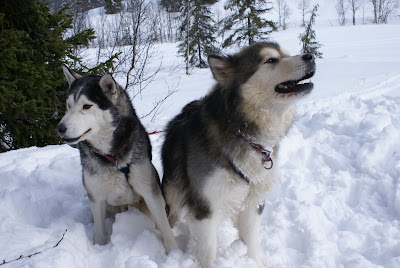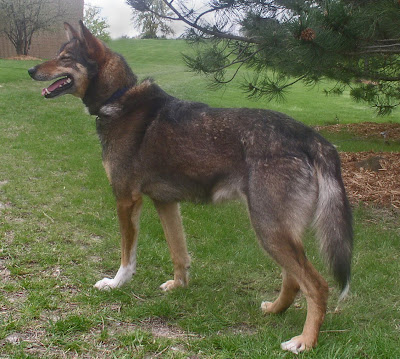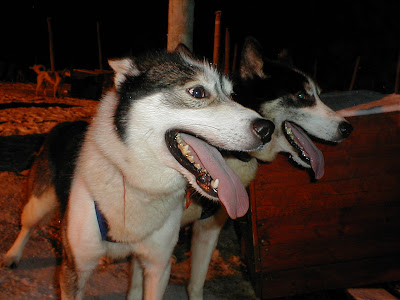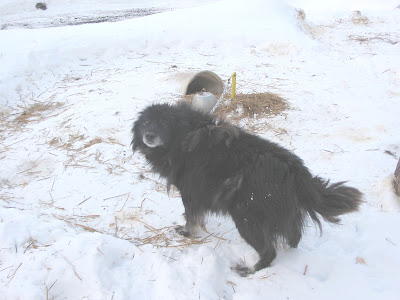Alaskan Huskies (at least those used for speed racing) are moderate in size, averaging perhaps 46 to 50 pounds (21 to 25 kg) for males and 38 to 42 pounds (17 to 19 kg) for females. Some of them superficially resemble racing strains of the Siberian Husky breed (which is likely part of the Alaskan Husky genetic mix), but are usually taller and larger with more pronounced tuck-up.
.
Color and markings are a matter of total indifference to racing drivers; Alaskans may be of any possible canine color and any pattern of markings. Eyes may be of any color and are often light blue. Coats are almost always short to medium in length, never long, and usually less dense than those of northern purebreds; the shorter coat length is governed by the need for effective heat dissipation while racing.
.
In very cold conditions, Alaskans often race in “dog coats” or belly protectors. Particularly in long distance races, these dogs often require “dog booties” to protect their feet from abrasion and cracking so the considerations of hardiness and climate resistance prevalent in breeds such as the Siberian Husky and Canadian Inuit Dog are subordinated in the Alaskan Husky to the overriding consideration of speed. On long distance races they require considerable care and attention on the trail at rest stops.
.
In Alaska and other extreme northern regions they are occasionally killed by moose in the winter. Infrequently, moose in search of non-existent winter browse of willows and mountain ash during desperate times of long cold snaps and deep snow will enter human areas attracted by the scent of fresh straw used as bedding for the dogs. True to their wolf ancestors, huskies tend not to back down from such encounters and an angry moose can easily stomp and kick several dogs causing severe injuries. Most moose/husky encounters occur during runs when a musher accidentally startles a moose on a trail. Most of the time moose avoid fights, but in cases of deep snow when escape is difficult a moose may confuse a sled team for a wolf pack and cause some serious trouble.
.
Normally, moose are aware that huskies are domesticated, tethered and not a threat and will frequently bed down adjacent to sled dog kennels in order to use the huskies as sentries who will alert the sleeping moose of approaching wolves. Sled dogs tethered in far northern forests may be attacked and killed on their stakeouts by wolves when other prey is unavailable. However, this is rare. Professional dog sled racers often surround their lots with high fences to prevent wildlife attacks. More important is a low fence to keep out diseased rodents which can infect dogs by carrying parasites.
Data Refer:http://en.wikipedia.org/wiki/Alaskan_Husky

















No comments:
Post a Comment